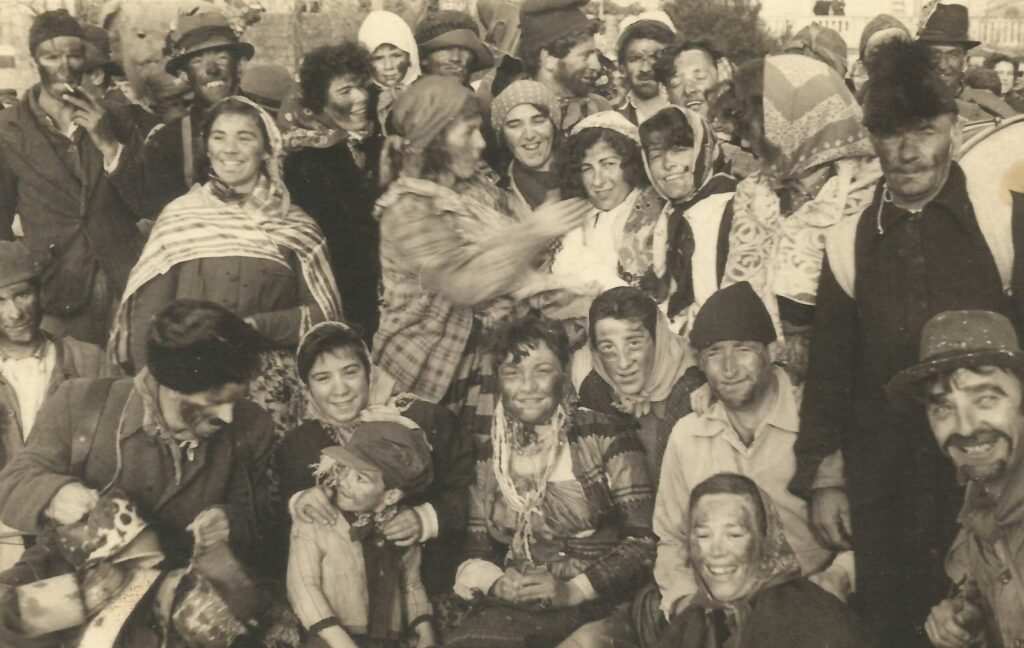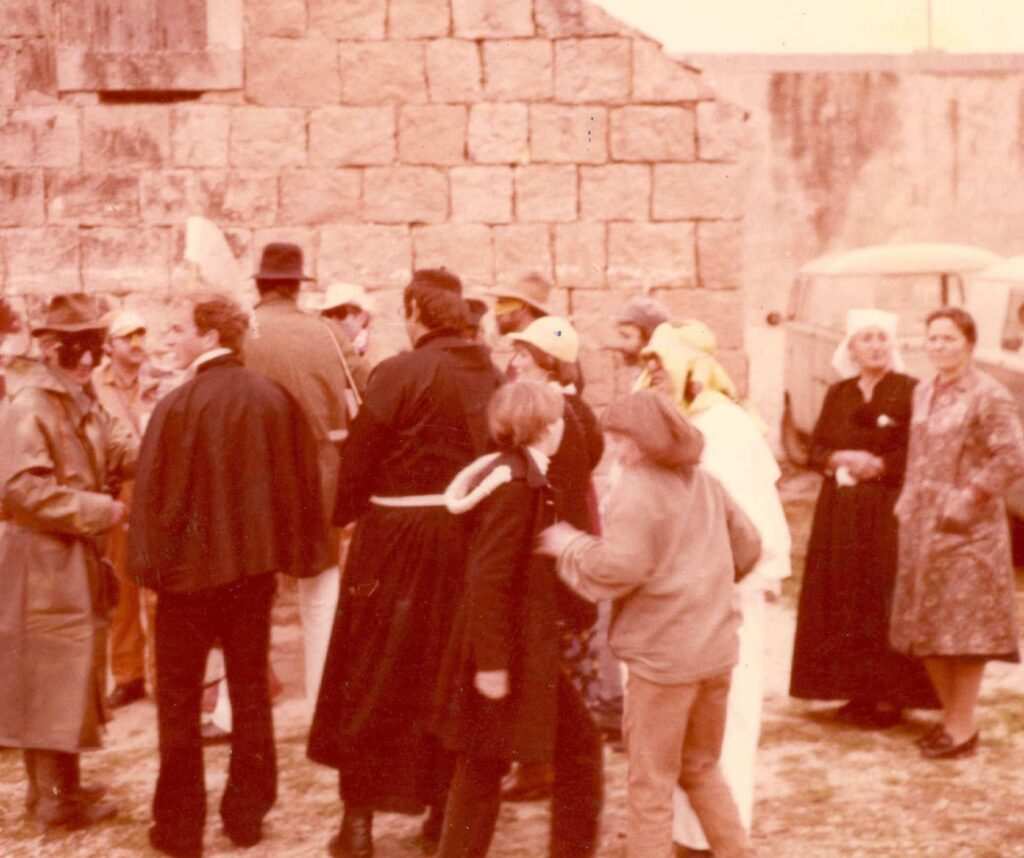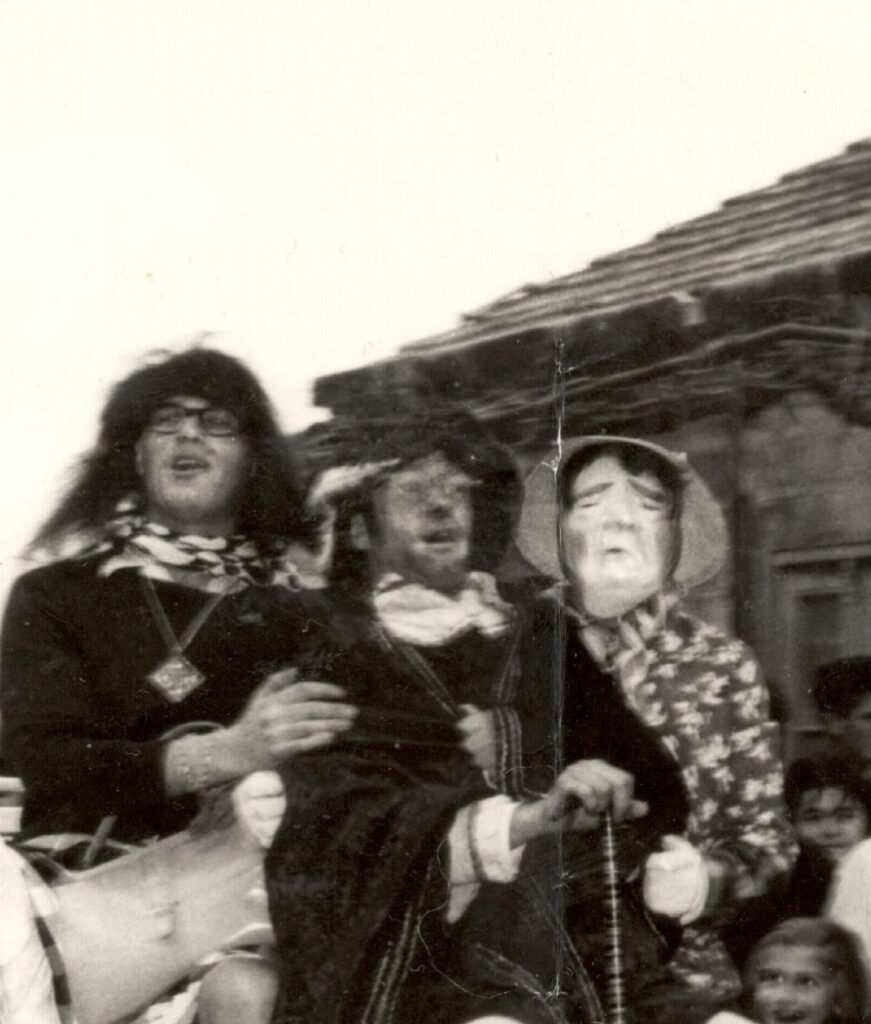The time of disguise, madness, merriment, jokes and laughter, music and dance, or carnival time in the cyclical movement of annual customs is located between the Christmas and Lent period. The beginning of the carnival period is usually the feast of the Holy Three Kings or Epiphany, January 6, which ends the Christmas holidays, and lasts until Ash Wednesday. Even though the last three days before Lent, Sunday, Monday and Tuesday, are the culmination of carnival events, when the biggest masquerade ceremonies take place, the entire carnival period of traditional culture is characterized by masked processions through villages and houses. In the long time of their existence, they have spawned a multitude of regionally and locally different carnival procedures and recognizable masked characters, in which Konavle region is no exception.
Traditional carnival masquerades in Konavle can be divided into three groups: masquerade that represents an object, masquerade that represents an animal and masquerade that represents a man, and within them we find several types. The masquerade representing the object was the least represented, and an example was recorded in village Brotnice where a scale or a man representing a scale appears. He has a rope tied around his thighs, and in the middle, between his legs on a wound rope, he has a stake with a potato. A tray is tied to his belly, he is covered with a raincoat and is led by other masquerades who play wool sellers.
When walking around the houses, they look for girls and women to whom they sell wool, and the measurement of the amount of wool takes place in such a way that the man-scale pulls the rope between the thighs, moving the stake up and down and hitting the tray. This highly phallic masquerade is an example of disjointed carnival freedom and the typical perversion of common norms of behaviour, which is primarily achieved by changing identity by masquerading.
Furthermore, traditional masquerades representing animals have several types, of which the most common is the horse masquerade, the making of which has been recorded in Čilipi and Molunat. The horse’s head was most often made of wood, with movable jaws on which the teeth were attached, that is, a pointed middle of an onion. The horse head was standing on the head of a man who was covered with a bed sheet, and he would open and close the jaws by pulling the rope. In village Uskoplje, a paper horse’s head was made, with a jaw made of reeds that did not open.
Masks of camels, birds and ostriches were made with a similar system. Masquerades representing a man are most numerous, depicting both women and men, and are often accompanied by dramatic play. Grandmothers, gypsies and Turks belong to a unique group of masquerade costumes. Men and young men would sneak around houses collecting eggs dressed in old, torn women’s traditional costumes, with a cloth with holes cut out for their eyes and mouth, over their faces. A goatskin made masquerade was also recorded. They were required to wear props such as a distaff and a bell, often ox horns to blow into as trumpets, and they sprinkled ashes on anyone who tried to reveal who was behind the mask. Masquerades of Gypsies were recorded in several villages in Konavle, when groups would dress up in old clothes and blacken their faces with soot. As early as the beginning of the 20th century, a gypsy mask made of ash or oak bark with holes for eyes, nose and mouth, bark teeth, a leather tongue with locks with auxiliary forks on a rope was recorded in village Vataje.
Masquerading as Turks with silk belts and a man’s traditional jacket with buckles was typical of the people from village Dunave who descended to Gruda in a procession. They always led a girl, or rather a man disguised as a woman, whom they called bula. The Turks had a text prepared in advance to address the household, and they would dance with the bula to check if she was limping, alluding to the wedding customs. If by chance two groups of masquerades met on the way, the flag bearers would bow flags to each other, and there were often fights and conflicts, mostly because of the honour of who allow whom to pass.
Furthermore, masked characters of grandparents, husband and wife with a particular mask theme, such as childbirth, are common. A man would put a cushion under women’s traditional winter costume and make a belly while pretending to be a pregnant woman. The pregnant ‘woman’was accompanied by another man, ‘her’ husband, midwife, godfather and priest. In the houses that are visited, childbirth would take place, in which the family members themselves participate, but are already familiar with traditional carnival games. The masquerade game razor is noteworthy, this was a game of shaving with a piece of wood. One of the masquerade group has a bucket of water and smears the costumed characters he will ‘shave’ with a wet cloth.
Numerous traditional masquerades, of which there were certainly more than the above mentioned, were accompanied by a dramatic play in which facial expressions were as important as the speech itself, i.e., the voice had to be changed so that the person would not be exposed. It is the hiding of one’s own identity and taking on another, most often by changing gender or social status, under the guise of a mask, is the main feature of masquerading. This enables the distortion of common norms of behaviour and temporary release of the burden of everyday roles, while the usual events of the carnival period exist as representative forms of folk drama, i.e., as a folk theatre that is at its most diverse and rich during carnival time.



